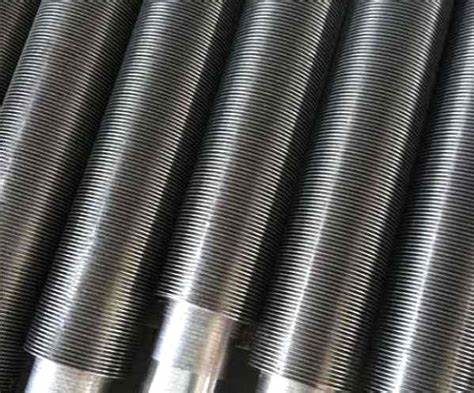Spiral Fin Tube Heat Exchanger: An Innovative Solution for Efficient Heat Transfer
The spiral fin tube heat exchanger is an advanced heat transfer device that is widely used in industries such as petrochemical, chemical, power generation, HVAC (Heating, Ventilation, and Air Conditioning), and food processing due to its outstanding heat transfer efficiency and compact design. Its unique structure and working principle allow it to achieve high-efficiency heat exchange in a limited space, making it an essential component in many industrial processes.
Basic Principle of Spiral Fin Tube Heat Exchanger
A spiral fin tube heat exchanger consists of fins, a spiral tube, and a shell. The fins are typically made of metals such as aluminum, copper, or stainless steel. These fins are spirally wound around the outer surface of the tube, creating multiple narrow gaps through which fluids can pass to facilitate efficient heat transfer.
The working principle is based on heat conduction, convection, and radiation. Inside the heat exchanger, one fluid flows through the tube, while another fluid passes over the spiral fins. Heat is transferred through the tube wall between the two fluids. The spiral fin design induces turbulence in the external fluid flow, enhancing the convective heat transfer and increasing the heat transfer rate.
Advantages of Spiral Fin Tube Heat Exchangers
-
High Heat Transfer Efficiency
The primary advantage of spiral fin tube heat exchangers is their exceptional heat transfer performance. The spiral design of the fins promotes turbulence in the fluid flow, which increases the heat transfer rate. Compared to traditional flat fin tubes, the spiral fins create a larger heat exchange surface area, improving heat transfer efficiency per unit area. -
Compact Structure
Spiral fin tube heat exchangers are compact in design, allowing them to achieve significant heat transfer capacity in smaller spaces. The arrangement of the spiral fins increases the surface area for heat exchange, which not only saves installation space but also reduces the overall size of the equipment. -
Strong Corrosion Resistance
These heat exchangers are often made from corrosion-resistant materials such as stainless steel and aluminum alloys, making them suitable for high-temperature, high-pressure, and corrosive environments. -
Versatile and Adaptable
Spiral fin tube heat exchangers are highly adaptable and can be used with a variety of fluids, including gases, liquids, and steam. This flexibility makes them ideal for a wide range of industrial applications. -
Energy-Saving and Environmentally Friendly
Due to their improved heat transfer efficiency, spiral fin tube heat exchangers help reduce energy consumption, lowering production costs. Their compact design and high performance also contribute to reducing environmental impact, aligning with sustainability goals.
Applications of Spiral Fin Tube Heat Exchangers
-
Petrochemical and Chemical Industries
In petroleum refining, spiral fin tube heat exchangers are used for oil-gas separation, cooling, heating, and other processes. Their ability to withstand high temperatures and pressures ensures stable heat transfer performance in demanding environments. -
Power Generation Industry
In power plants, spiral fin tube heat exchangers are commonly used in steam condensation, cooling water systems, and heat recovery processes. Their high heat transfer efficiency helps improve the overall thermal efficiency of power generation equipment, reducing energy consumption. -
HVAC Systems
In HVAC systems, these heat exchangers are used in air conditioning and heating equipment to optimize the heat exchange process and improve system efficiency. -
Food Processing Industry
In food processing, spiral fin tube heat exchangers are used for heat treatment, cooling, and other heat exchange processes, helping food manufacturers improve production efficiency while preserving the nutritional value and taste of the products.
Design and Optimization of Spiral Fin Tube Heat Exchangers
Designing a spiral fin tube heat exchanger involves considering various factors, such as the flow characteristics of the fluid, the properties of the heat transfer medium, operating pressure, and temperature. Optimizing the spacing of the fins, the angle of the spirals, and the tube wall thickness can further improve heat transfer performance.
Additionally, material selection is crucial for specific applications. For example, in environments with corrosive fluids, using corrosion-resistant materials can extend the lifespan of the equipment and reduce maintenance requirements.
For more information on spiral Fin Tube Heat Exchangers and to explore the various models available, dont hesitate to contact us. Our team of experts can help you select the best solution tailored to your needs.


